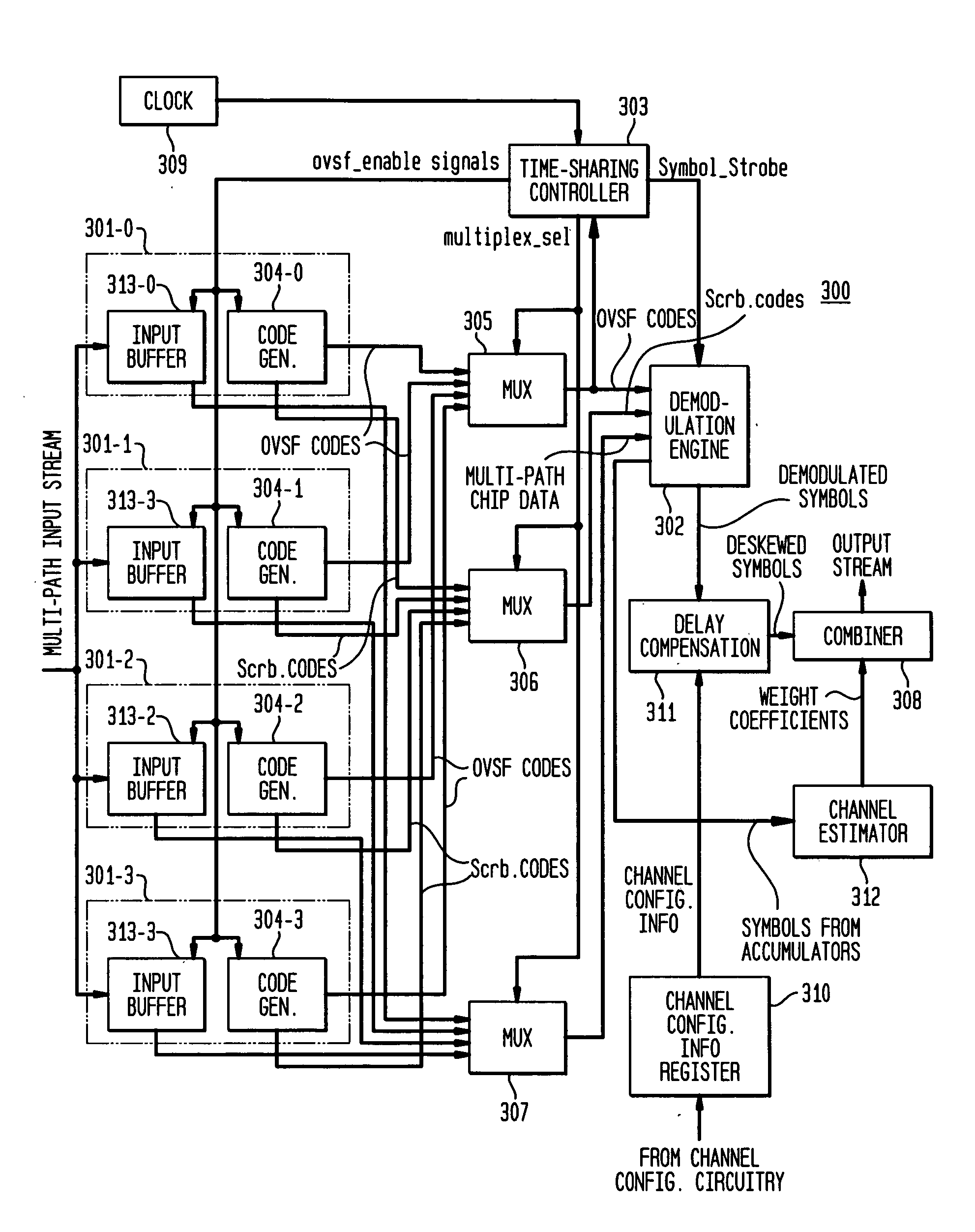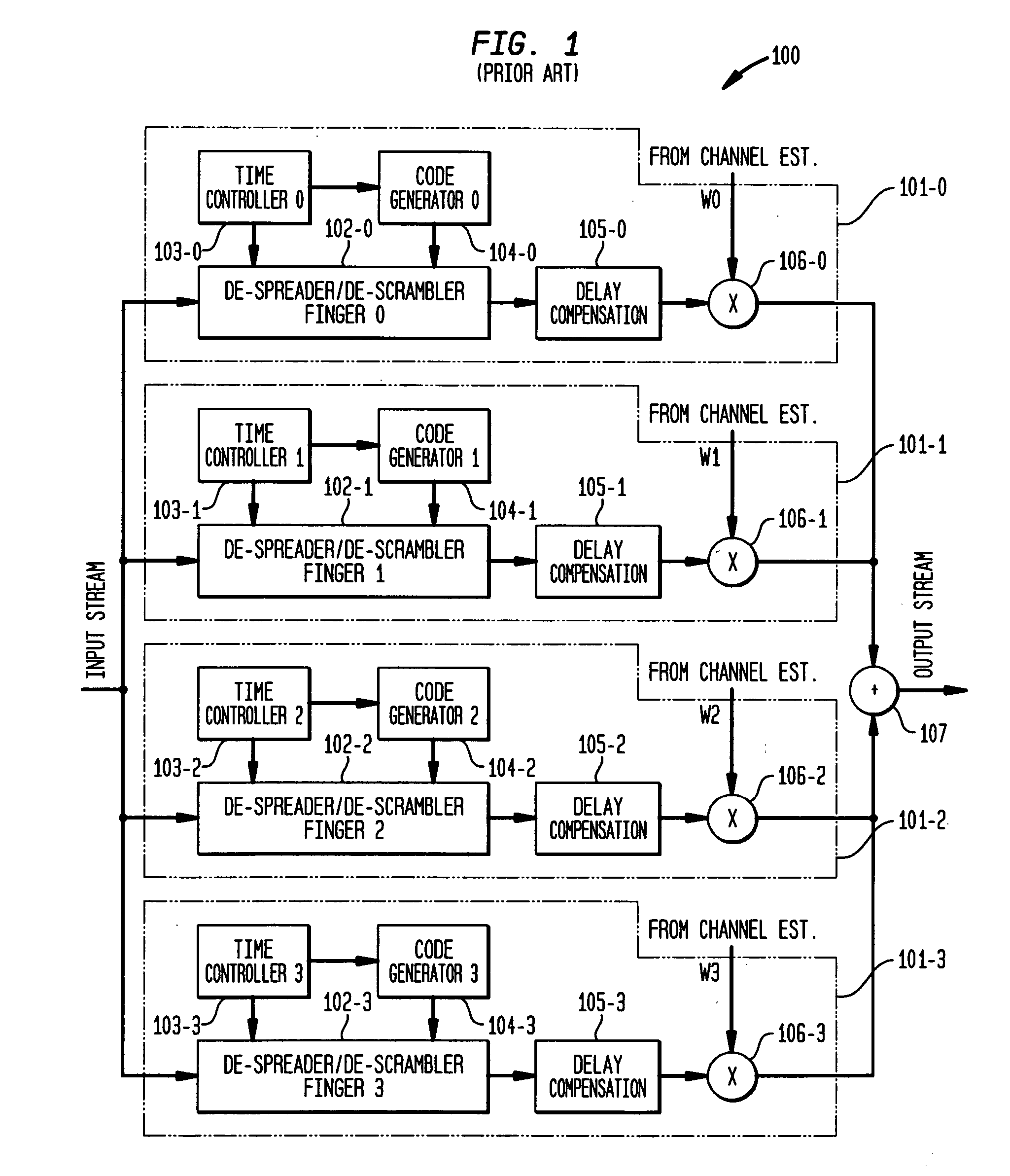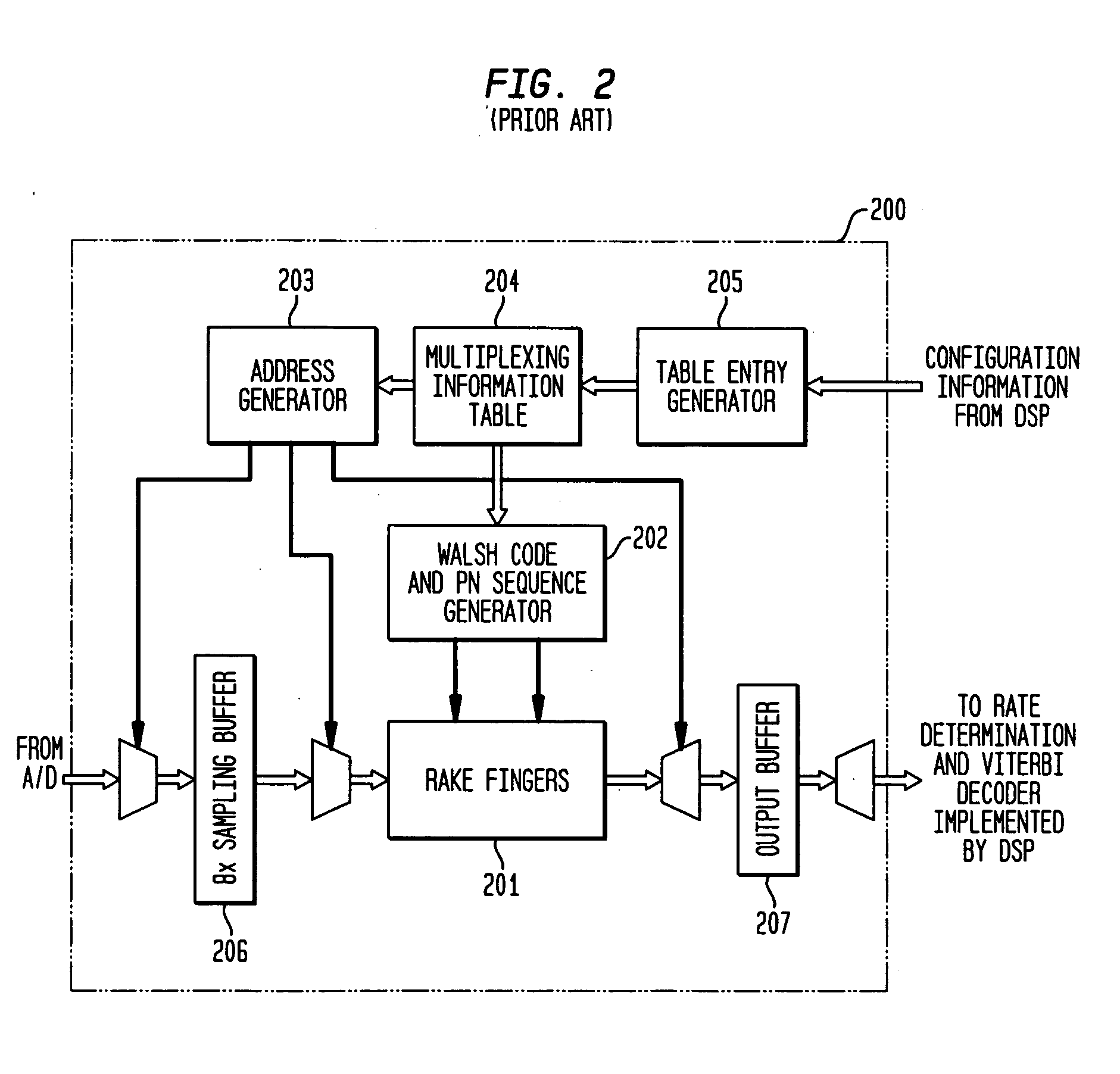Rake receiver with time-shared fingers
a rake receiver and finger technology, applied in the field of wireless receivers, can solve the problems of large hardware area, random noise of sequences in receivers, and large hardware area of typical rake receivers
- Summary
- Abstract
- Description
- Claims
- Application Information
AI Technical Summary
Benefits of technology
Problems solved by technology
Method used
Image
Examples
Embodiment Construction
[0031]FIG. 3 is a block diagram illustrating the structure of an exemplary rake receiver 300 consistent with one embodiment of the present invention. As shown, rake receiver 300 has four fingers 301-0 to 301-3, each of which collects energy for a particular multi-path component of the received signal. Unlike the prior art, it should be noted that fingers 301-0 to 301-3 do not include any hardware for demodulation, descrambling, despreading, or filtering, since these operations are instead (preferably although not necessarily) performed at a single demodulation engine 302, which is shared by all four fingers 301-0 to 301-3. If despreading is to be performed at the demodulation engine 302, then an input sample will contain multiple chips. During each chip period, all four fingers are active and simultaneously process a single data sample from the multi-path signal. However, the outputs of the fingers are multiplexed so as to provide chip data from only one finger at a time to demodula...
PUM
 Login to View More
Login to View More Abstract
Description
Claims
Application Information
 Login to View More
Login to View More - R&D
- Intellectual Property
- Life Sciences
- Materials
- Tech Scout
- Unparalleled Data Quality
- Higher Quality Content
- 60% Fewer Hallucinations
Browse by: Latest US Patents, China's latest patents, Technical Efficacy Thesaurus, Application Domain, Technology Topic, Popular Technical Reports.
© 2025 PatSnap. All rights reserved.Legal|Privacy policy|Modern Slavery Act Transparency Statement|Sitemap|About US| Contact US: help@patsnap.com



